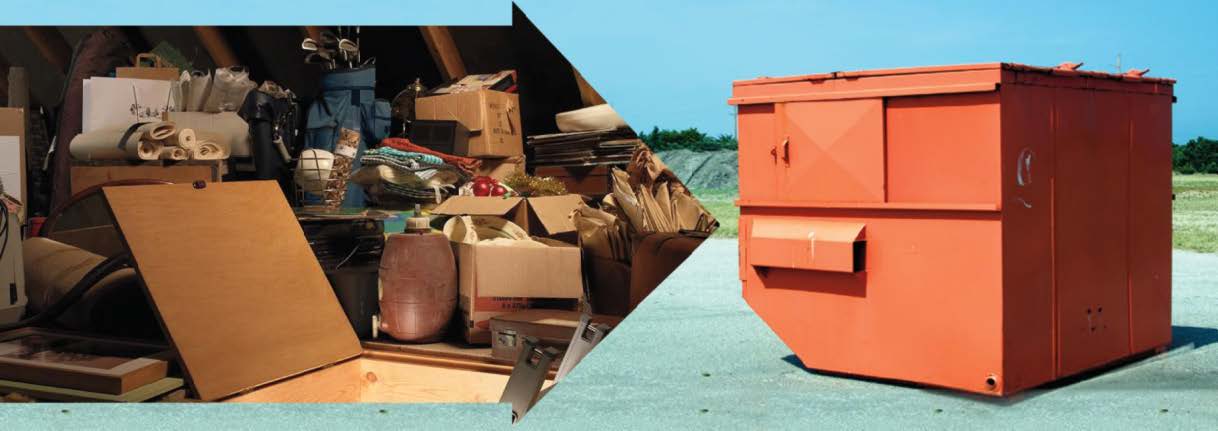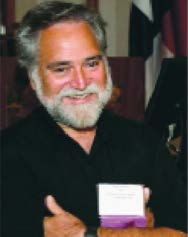
On Becoming a Practitioner of the Gentle Art of Swedish Death Cleaning
Exceptional parents have far too many artifacts to sift through and decide which pile to place them in. What do you do with early IEPs, MRI findings, Special Olympic medals, behavioral support plans, clinic appointment cards, support group newsletters, insurance explanation of coverage and conservatorship papers?
It started innocently enough. My wife decided it was time to change the carpeting in our bedroom. It had outlived its place in our home. Relegating carpeting as a second-tier floor covering was difficult at the beginning. Like Woody Allen – who described his Jewish family and neighborhood as being from "the heart of the old world, their values are God and carpeting" – I always thought carpeting was the flooring you opted for when you "arrived." The die was cast and arrangements were made for the carpeting to be removed, and a new cork floor was scheduled for installation. I was instructed to clean out my closet to enable the installers to lay down the flooring, which included removing cabinets and drawers in my closet. This was a no-holds-barred strip down to the last unmatched sock, and to the T-shirts that announced that I participated in several sports car rallies when I was in college. It was long overdue and presented me with an opportunity to confront the accumulated mess of too many things that were taking up space. It also reminded me that I was three ball caps shy of being considered a hoarder.
The operative word for my initiative was "ruthless." Of course, being a physician, I quickly adopted the "triage model" – three piles designating "keep," "donate," or "junk." It quickly became apparent that the accumulated collection had become invisible to me. By the time I had cleaned out the closet (five bags of black heavy-duty contractors bags), I had reached the equivalent of a "runner's high." Throughout the process I had become a disciple of Kerri Richardson: "Clutter. Even the word feels heavy when you say it. We've become consumed by stuff and so inundated by things that we almost have nowhere to turn." (What Your Clutter Is Trying to Tell You: Uncover the Message in the Mess and Reclaim Your Life). Feeling victorious from my conquering of closet clutter I started thinking of what other piles had become invisible. It was during this exploratory excursion that I found out about "the gentle art of Swedish death cleaning." Margareta Magnusson, who describes herself as being between "eighty and one hundred," has written the definitive book on "death cleaning. "

Death cleaning comes in two waves. Initially it comes from inheriting "stuff" from your deceased parents. Old furniture, photos, clothes, art, collectibles, old Volvos, endless pieces of paper and the occasional arthritic Fox terrier. The full monty of emotions accompanies the inheritance. The question of what to do with the stuff becomes as difficult as deciding if D-Day would be more successful if they waited for the weather to change.
CLEAR THE WAY: (Above) "The operative word for my initiative was 'ruthless.' By the time I had cleaned out the closet (five bags of black heavy-duty contractors bags), I had reached the equivalent of a 'runner's high.'"
The second wave of death cleaning comes when you are forced to confront what to do with your "own stuff." Death cleaning is not a sad endeavor, unless it paralyzes you. It stems from the wisdom of Einstein (who had the unique challenge of constantly having to declutter his thinking), "Out of clutter, find simplicity." We don't necessarily engage in death cleaning to save our offspring and spouses from the arduous task, when the time comes, of having to deal with our stuff (although that is a loving gift for sure), but simply to come to the realization that our lives could be made simpler if we learn to live with less.
Successful Swedish death cleaning suggests that you start to confront the big stuff first. Furniture is typically the easiest to deal with, and the monthly bills for the rental of a storage bin might remind you that it was enough to remember all the good times you had, watching the 16-inch black-and-white Dumont television without actually having to keep it. The same goes for the 40-yearold Remington typewriter that you remember your father toiling over in his attempt to write the next great American novel. Sentimentality is a wonderful and endearing quality, but there is something equally endearing to learn that you don't have to own something to appreciate and enjoy them.
The last thing to confront when you are death cleaning is photos. They fall into a very unique and challenging class. The American photographer Aaron Siskind said it best, "Photography is a way of feel ing, of touching, of loving. What you have caught on film is captured forever… it remembers little things, long after you have forgotten everything." It is in that last concept that "it remembers little things," which can be reason enough not to relegate family photos to the "clutter pile." How could you discard things that prove, remind and testify that you came from somewhere; somewhere that no one else can claim?
Swedish death cleaning can be a very invigorating uplifting, and inspiring endeavor. It encourages you to reflect and reconstitute memories of people caring for, and about people.
"Swedish death cleaning can be a very uplifting, invigorating and inspiring endeavor. It encourages you to reflect and reconstitute memories of people caring for, and about people. Sometimes we simply come to the realization that our lives could be made simpler if we learn to live with less."
For exceptional parents, death cleaning can have deep, significant and heartfelt emotions. They have far too many artifacts to sift through and decide which pile to place them in. What do you do with early IEPs, MRI findings, Special Olympic medals, behavioral support plans, clinic appointment cards, support group newsletters, insurance explanation of coverage and conservatorship papers?
Maybe the answer can be found in the insight of Anne Lamott, "Perfectionism means that you try not to leave so much mess to clean up. But the clutter and mess show us that life is being lived." I love our new cork floor. •